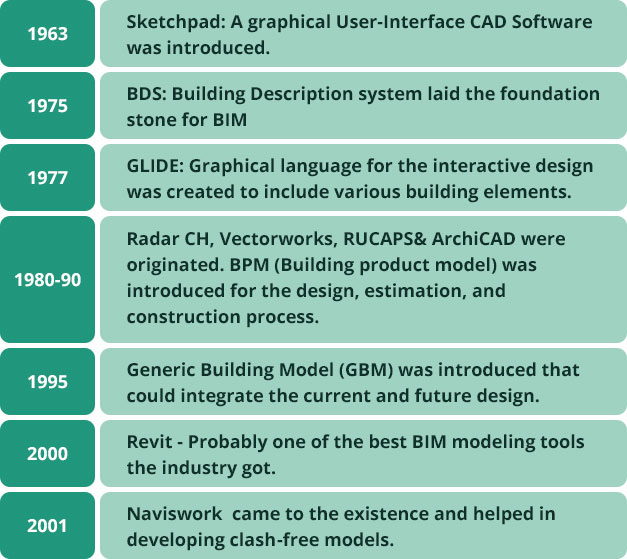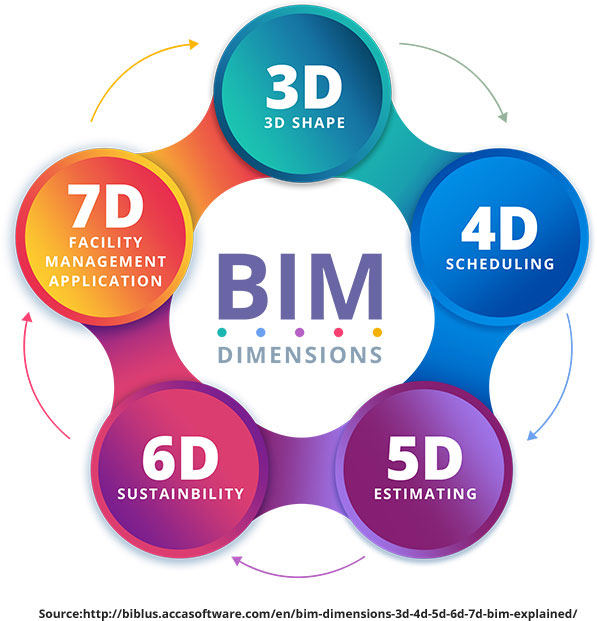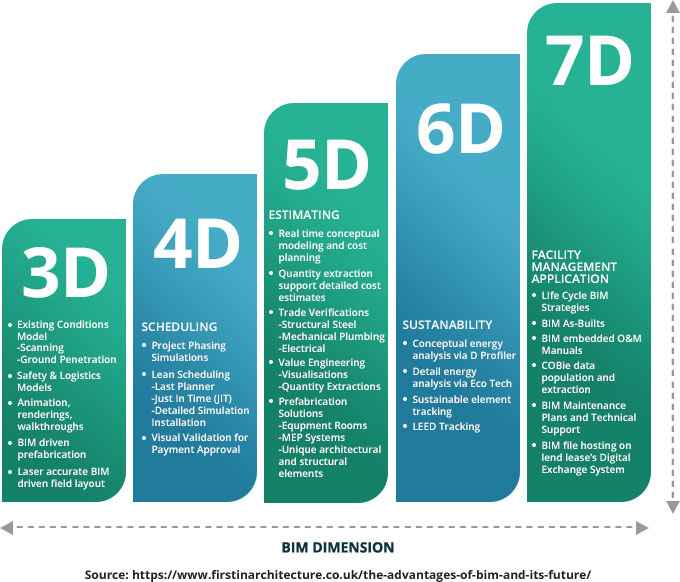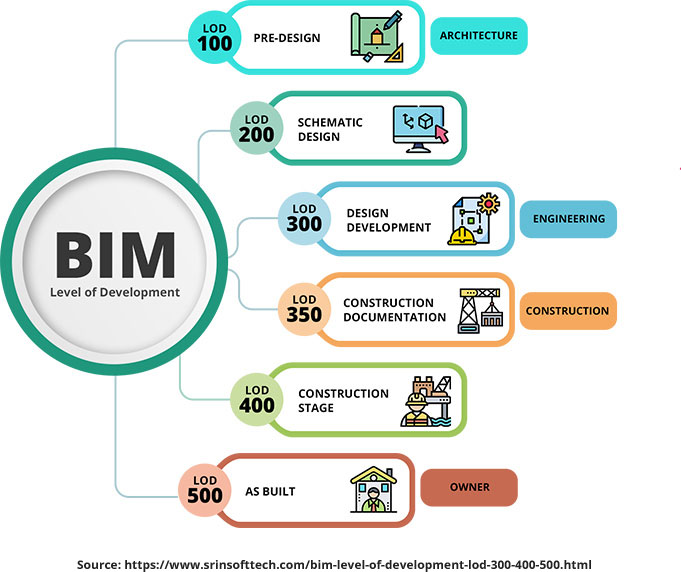BIM has been the buzzword in the construction industry for the last few years. As a new approach to infrastructure development, it has brought a lot of opportunities to make the entire construction process as hassle-free as possible. BIM uses a common data resource to digitally design a facility along with its physical and functional features. It is an object-oriented model featuring the object’s geometry, attribute, and their relation.
The construction industry is continuously evolving, and to remain at the top of the ladder, the major players have integrated with the advanced technology. The amazing features of BIM: parametric modeling, database management (for design, construction & maintenance), Simulation tools, Clash-detection and Cost-benefit factors have drawn the attention of construction companies by bringing efficiency, quality and a more streamlined workflow to the project. The adoption rate of BIM is rising and the potential of the technology to enhance construction productivity is acknowledged by the major countries. For instance, the UK government made BIM mandatory for all its construction projects in 2016 itself, 20% of the industry has implemented BIM till now.
Evolution of BIM – History of BIM and its transition
Even though BIM is trending in the construction Industry roughly from the last seven years, the concept existed since the 1960s, from the advent of Computer-aided Design (CAD).

BDS presented the idea of parametric design, 3D representation, and single integrated database. It also identified the basic problems of architectural design. GLIDE presented several characteristics of modern BIM, including various elements. In the 1980s and several CAD programs were developed as a step towards virtual design and construction. RUCAPS (1986) was the first prefab construction CAD program, ArchiCAD (1987) was the first BIM software designed for personal computer, and Vectorworks (1985) was the first 3D Modeling and cross-platform CAD program.
The technological advancements were gradually impacting the AEC Industry. As a move to improve its project management and delivery standards, the Industry was slowly integrating with modern technology. BIM was steadily progressing as a cross-disciplinary and multipurpose tool, the birth of Revit and Naviswork software, further enhanced 3D CAD Navigation, Collaboration, and Coordination in the construction Industry.
Dimensions of BIM – BIM 3D, BIM 4D, BIM 5D, BIM 6D, and BIM 7D
BIM has been categorized into several dimensions to add different information like cost and time, etc. to the model apart from the geometric 3D model. There are seven BIM dimensions which have been recognized theoretically. From BIM 3D to BIM 7D – these dimensions ease the process of BIM Implementation by digitally feeding and analyzing the vital inputs to the model.

Why BIM is needed:
Today, the construction companies are undergoing many major challenges that are acting as an impediment towards their growth. A report published by AGC (American General Contractors) says that 74 percent of the construction companies (participants) feel there is a lack of skilled labor force in the industry and 54 percent of them are finding arduous to hire skilled contractors, engineers and, estimators. Only 30 percent of the companies can deliver the project within the estimated budget and just 15 percent can deliver the project on time.
Skilled labor shortage
By 2020, millennial is going to represent fifty percent of the global manpower with zero interest and little experience in the construction sector. The scarcity of skilled manpower and labor diversification brings security issues and quality construction challenges to the industry. BIM can deal with these issues to a large extent by sharing crucial information about the project with the team and reducing dependency on their previous knowledge and experience.
Decline in profit margin
Stagnation in productivity is being observed in the industry from the last 50 years resulting in a decline in the profit margin. As the complexity of the projects increases, labor productivity comes to a standstill. Better planning and collaboration can be achieved with a BIM model to activate labor productivity and elevate the profit margin.
Environmental sustainability
Climate change and water management are becoming their biggest challenge. BIM tools offer sustainable designs, by reducing waste, water management and, minimizing energy consumption.
Change in technology
The application of new technology and digitalization of the industry is vital to improving, the project’s performance, productivity, and profitability. Integrating with BIM, the companies can implement the updated technology gradually in different levels to avoid any clash.
How BIM can address the problems in the construction industry?

The seven dimensions of BIM 3D to 7D deal with several pain points of the construction industry by resolving the issues through the project’s life-cycle. BIM dimensions have the potential to integrate several building elements to resolve common project challenges.
BIM 3D for cross-discipline collaboration
BIM 3D is an integrated data model having structural and functional information of the project and its systems. This information can be extracted by engineers, designers, contractors, and other stakeholders who analyze it to resolve any structural issues. New values can be added at any point in time as it brings accuracy and reduces clash. Data sharing is yet another feature that boosts an effective interdisciplinary collaboration.
Alignment of time and schedules with BIM 4D
The time dimension of BIM integrated with BIM 3D brings real-time graphical visualization of the construction growth or progress. BIM 4D links the project‘s elements and design components with the construction schedule to optimize the planning process and time management of the construction activities.
Cost-effective projects with BIM 5D
Interlinked with 3D and 4D BIM, the fifth dimension helps in tracking the project activities and estimating the cost, with time and changes made to the project. An effective, accurate, and balanced budget is achievable with 5D BIM technology.
6D BIM for sustainable projects
6D BIM estimates energy consumption at the design stage of the project. The layouts can be tailored accordingly to minimize energy loss and achieve the sustainability of the building.
BIM 7D for facility management
Project information and documentation can be stored and retrieved using 7D –BIM. Information about the building elements, maintenance and operation schedules, technical details, equipment manuals, warranty details, etc. can be stored and extracted to optimize facilities/asset management. Efficient asset management increases the life-span of the asset.
BIM Life Cycle
The Life cycle of a BIM construction project is classified into several Level of Development (LOD) to represent data (geometric information, structured data and, documentation) and reliability of BIM elements at different stages of BIM model. The construction model changes throughout its lifecycle and LOD classes help in identifying the responsible parties for the change. LOD 100, LOD 200, LOD 300, LOD 350, LOD 400 and LOD 500 are the different refinement levels of 3D BIM model.

LOD 100 – Initial Concept
The initial stage lays the foundation of the model. A concept or a conceptual model is generated by designers and architects from the data gathered by surveyors and the client. The model comprises of dimensions like area, height, volume, orientation, and location. At this stage, geometric information of the model cannot be included but the design requirements of the client are ensured.
LOD 200 – Schematic Design
A generic model is developed by the architects and designers with approximate orientation details, size, shape, and location. The data is gathered by the architects and designers from the surveyor, to model the elements, qualitative non-geometric information is also attached to the elements.
LOD 300 – Detailed Design
Detailed geometry of the model with accurate specifications (quantity, size, and shape) of the elements is created. The precise and specific assemblies, location and orientation of the model elements are also defined and designed. Shop drawings with precision and accuracy are developed. Here designers in connection with the contractors can add a schedule and cost-estimate data to the model. At this level, information and measurements from the model and drawings can be extracted due to its accuracy.
LOD 350 – Documentation
The model elements are interlinked to other elements and systems. Now, the model represented with graphics and written documentation shows, how these element interfaces with another element, system, and services. As the model approaches the construction stage, its accuracy is cross-checked with the contractors by the design team.
LOD 400 – Fabrication and Assembly
This level can be summarized as detailing, fabrication, and installation. The building elements are modeled as if individual assemblies, the fabrication, and geometric details are added. Even their non-geometric information can be attached. Now, the model is shared with other stakeholders of the project, suppliers, and contractors, contractors get an idea about the project requirements and assign it to sub-contractors.
LOD 500 – As-Built
For operational and maintenance purposes, as-built or constructed data is added to the model. After being modeled as constructed assemblies the model is analyzed against the design. The model’s maintenance and supervision responsibilities are taken in charge by the contractors and owners.
BIM’s LOD framework gives better control to the projects, effective and accurate planning, and tracking of various project activities at different levels streamlines the workflow and enhances productivity.
BIM Is the Future – BIM Implementation can give larger dividends than anticipated
BIM technology is continuously evolving with new tools for planning, design, construction, and operations that are being added to its domain time and again. Focusing on the safety concern of the construction industry, the technology has added one more dimension, 8D BIM to its list. The fast progress of technology ensures its vivid future in the construction Industry.
As a leading BIM service provider with a plethora of solutions such as BIM model auditing, point cloud to BIM, BIM clash detection, etc. eLogicTech has been assisting organizations over the past two decades. So, if you need any suggestion on BIM implementation regarding skilled workforce to technology adoption, or cost, feel free to get in touch with our BIM modeling experts.







